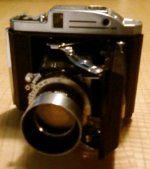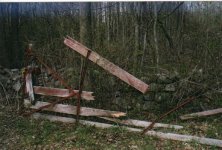Soeren
Well-known
Hi All
A few days ago I developed two rolls of Tri-x from my Ikonta 531/16 in Diafine and besides finding one of them to be backwards (numbers etc running opposite way) one had very tight spacing between the frames to allmost overlaping. The frame edges on that roll also are rounded and fuzzy almost holgalike. Did I fail to load that roll correctly?
Best regards
A few days ago I developed two rolls of Tri-x from my Ikonta 531/16 in Diafine and besides finding one of them to be backwards (numbers etc running opposite way) one had very tight spacing between the frames to allmost overlaping. The frame edges on that roll also are rounded and fuzzy almost holgalike. Did I fail to load that roll correctly?
Best regards





